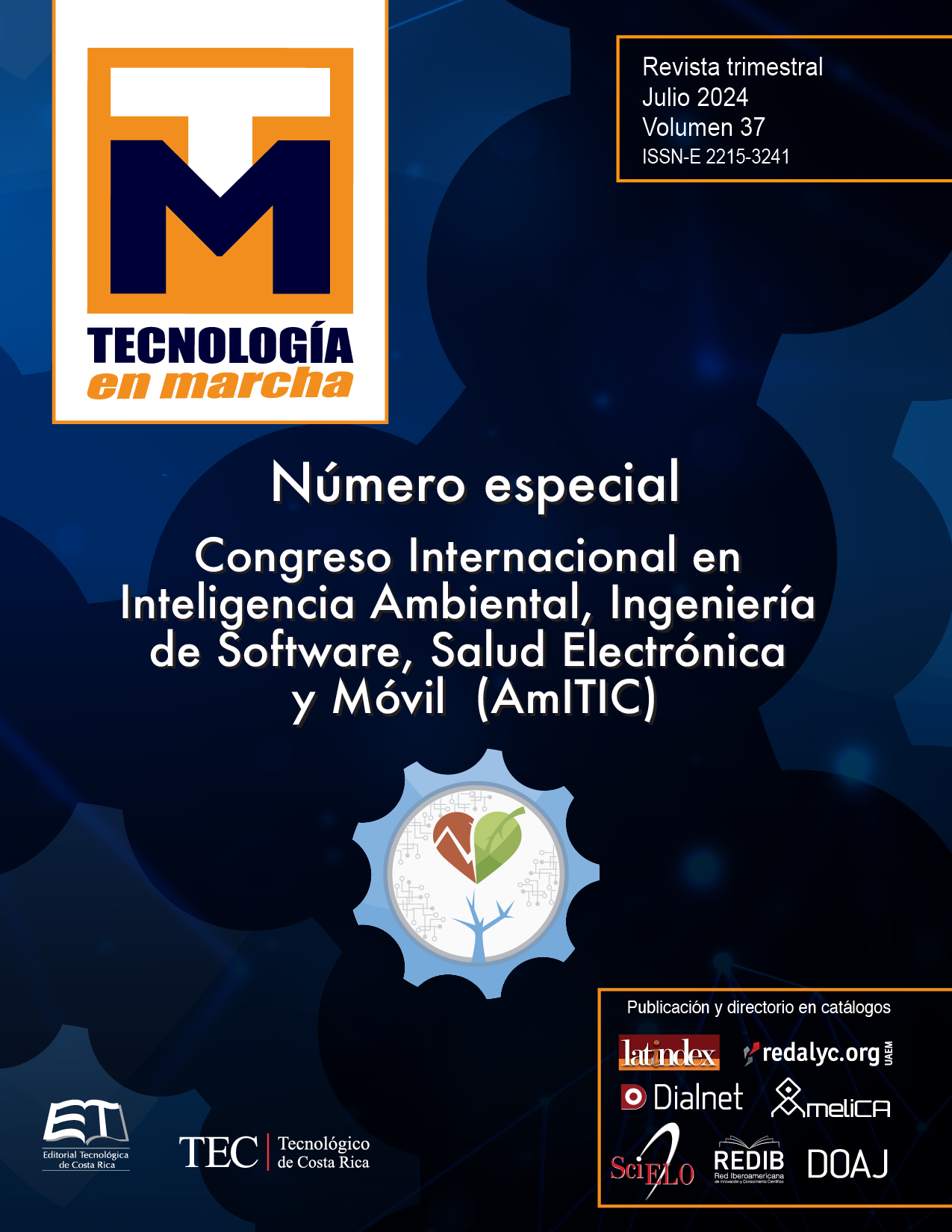2D Unity Video Game: 2D Unity video game: Augmented Reality with Vuforia and assertive communication educational approach
Main Article Content
Abstract
This project will focus on the development of a 2D video game which uses flat graphics called sprites, and do not have three-dimensional geometry, are drawn on the screen as flat images and with an RPG style is an acronym derived from the English “Role-Playing Game” (Role-Playing Game in Spanish), which provides the player the ability to embody one or multiple roles in a fictional environment. This genre offers immersive experiences by allowing players to influence the narrative and character development, highlighting the integration of augmented reality through open source platforms such as Unity and Vuforia. The strategic implementation of assertive communication will play a crucial role in ensuring not only the delivery of a visually appealing product, but also the creation of an enriching and immersive user experience where it will play a fundamental role in the conception and development of the game. The aim is not only to entertain users, but also to ensure an optimal experience. The interaction between players and the virtual environment will be designed in a way that encourages player participation, providing constant feedback and guidance as the game progresses. The search for user satisfaction will be translated into a design that motivates players and the course they take throughout the journey will be the most effective, promoting participation and ensuring a meaningful connection with the plot of the game and their journey through the intriguing virtual world created, which is inspired by the literary work “Omnia” by Laura Gallego.
Article Details

This work is licensed under a Creative Commons Attribution-NonCommercial-NoDerivatives 4.0 International License.
Los autores conservan los derechos de autor y ceden a la revista el derecho de la primera publicación y pueda editarlo, reproducirlo, distribuirlo, exhibirlo y comunicarlo en el país y en el extranjero mediante medios impresos y electrónicos. Asimismo, asumen el compromiso sobre cualquier litigio o reclamación relacionada con derechos de propiedad intelectual, exonerando de responsabilidad a la Editorial Tecnológica de Costa Rica. Además, se establece que los autores pueden realizar otros acuerdos contractuales independientes y adicionales para la distribución no exclusiva de la versión del artículo publicado en esta revista (p. ej., incluirlo en un repositorio institucional o publicarlo en un libro) siempre que indiquen claramente que el trabajo se publicó por primera vez en esta revista.
References
Gamarra Torres, J. Á., & Mercado Oré, S. A. M. (2021). Aplicación móvil de realidad aumentada con Unity y Vuforia para el aprendizaje de ciencia y tecnología en el Colegio América. Universidad César Vallejo.
García Martínez, S.-L. (2022). Taiyou: concept art de un videojuego RPG 2D. Universitat Politècnica de València.
Graullera Miñana, C. (2022). Aeternus Valhalla, Desarollo 2D de un videojuego. Universitat Politècnica de València.
Marín Diaz Verónica, Morales Díaz, M., & Reche Urbano, E. (n.d.). Aprendizaje con videojuegos con realidadaumentada en educación primaria.
Chumpitaz, S., & Alonso, J. (2019). El lenguaje audiovisual cinematográfico aplicado a los videojuegos : el caso de “The last of us”. Pontificia Universidad Católica del Perú. https://tesis.pucp.edu.pe/repositorio/handle/20.500.12404/14043
Terroni, N. N. (2009). La comunicación y la asertividad del discurso durante las interacciones grupales presenciales y por computadora. Psico-USF, 14(1), 35–46. https://doi.org/10.1590/s1413-82712009000100005.
Diaz Verónica Morales Díaz, M., & Reche Urbano, M. (s/f). Aprendizaje con videojuegos con realidad aumentada en educación primaria.
D. Ruiz Torres. (julio,2023Vista de La Realidad Aumentada y su dimensión en el arte: La obra aumentada. (s/f-a). Revistas.um.es. Recuperado el 18 de noviembre de 2023, obtenido de https://revistas.um.es/reapi/article/view/146261/130661.
Gonzáles, M. (2022, septiembre 28). Los 8 Mejores Videojuegos de Realidad Aumentada. Filmora; Wondershare Filmora. https://filmora.wondershare.es/video-editing/augmented-reality-video-games.html
Creis Sebastián, J. (2018). Videojuego 2D de cartas y RPG para Android desarrollado en Unity. ETSI_Sistemas_Infor.
Quiñonez Fuentes, J. Z., & Moyano Arcos, G. (2019). La asertividad como estilo de comunicación en la formación del sujeto educador. Revista Scientific, 4(Ed. Esp.), 68–83. https://doi.org/10.29394/scientific.issn.2542-2987.2019.4.e.4.68-83
Holmes, M. (2020, marzo 15). 40 años después: Cómo se hizo Rogue, con Glenn Wichman. Gamereactor. https://www.gamereactor.es/40-anos-despues-como-se-hizo-rogue-con-glenn-wichman/
Rodríguez Moraleja, I. (2022). Desarrollo de un videojuego 2D: The dungeon rules. Universitat Oberta de Catalunya (UOC).
Garita Hernández, F. A., Lizano Madriz, F., & Cordero Esquivel, C. M. (s/f). Metodologías para el Desarrollo de Videojuegos Serios: Una Revisión de Literatura Methodologies for the Development of Serious Video Games: A Literature Review. Una.ac.cr. Obtenido de https://repositorio.una.ac.cr/bitstream/handle/11056/22597/55-Texto%20del%20art%C3%ADculo-108-1-10-20210102.pdf?sequence=1.
Carvajal, R., & Alberto, C. (2009). Aproximación a la teoría de juegos. Revista Ciencias Estratégicas. Obtenido de https://repository.upb.edu.co/handle/20.500.11912/7479
Monsalve, S. (s/f). John Nash y la teoría de juegos. Com.ar. Recuperado el 18 de noviembre de 2023, de https://www.cienciared.com.ar/ra/usr/4/26/john_nash_y_la_teor_a_de_juegos.pdf

